Frog And Toad Conservation Programs Around The World: Global Efforts To Save Amphibians
Frogs and toads face many challenges that threaten their survival, from habitat loss to disease.
Conservation programs are crucial for protecting these species and preserving biodiversity.
Around the world, dedicated scientists, zoos, and volunteers are working tirelessly to monitor populations and restore habitats.
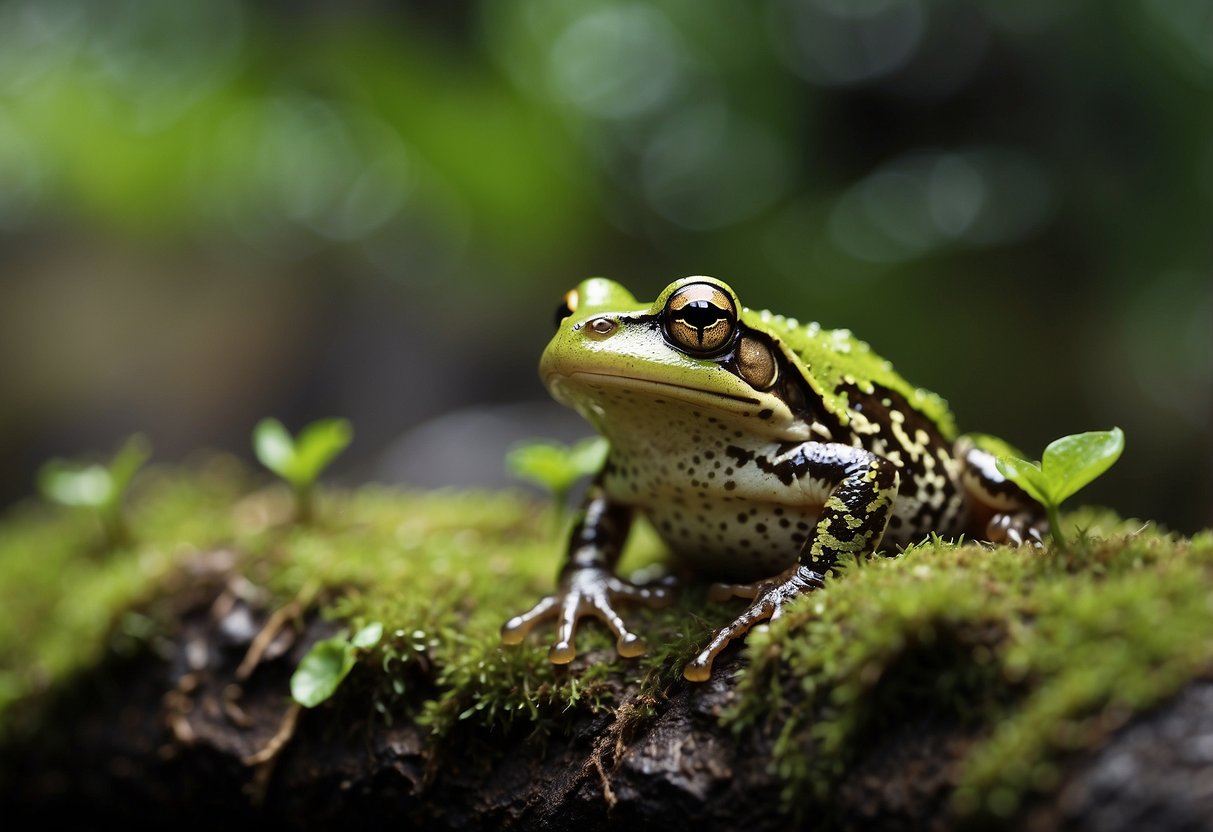
In Panama, the Amphibian Rescue and Conservation Project aims to save species like the Panamanian golden frog, extinct in the wild, through breeding programs at multiple facilities, including the Maryland Zoo.
Meanwhile, the Santa Barbara Zoo has been gathering data for over a decade to understand the declines in frog and toad populations.
Key conservation efforts are happening globally, from the Wyoming Toad programs in North America to the protection of the Java flying frog in Indonesia’s Mount Gede Pangrango National Park.
These initiatives highlight the importance of international collaboration and the dedication needed to safeguard these vulnerable amphibians.
Key Takeaways
- Conservation programs are vital for protecting frogs and toads.
- They often involve breeding, habitat restoration, and monitoring.
- International collaboration enhances the effectiveness of these efforts.
Overview of Frog and Toad Conservation
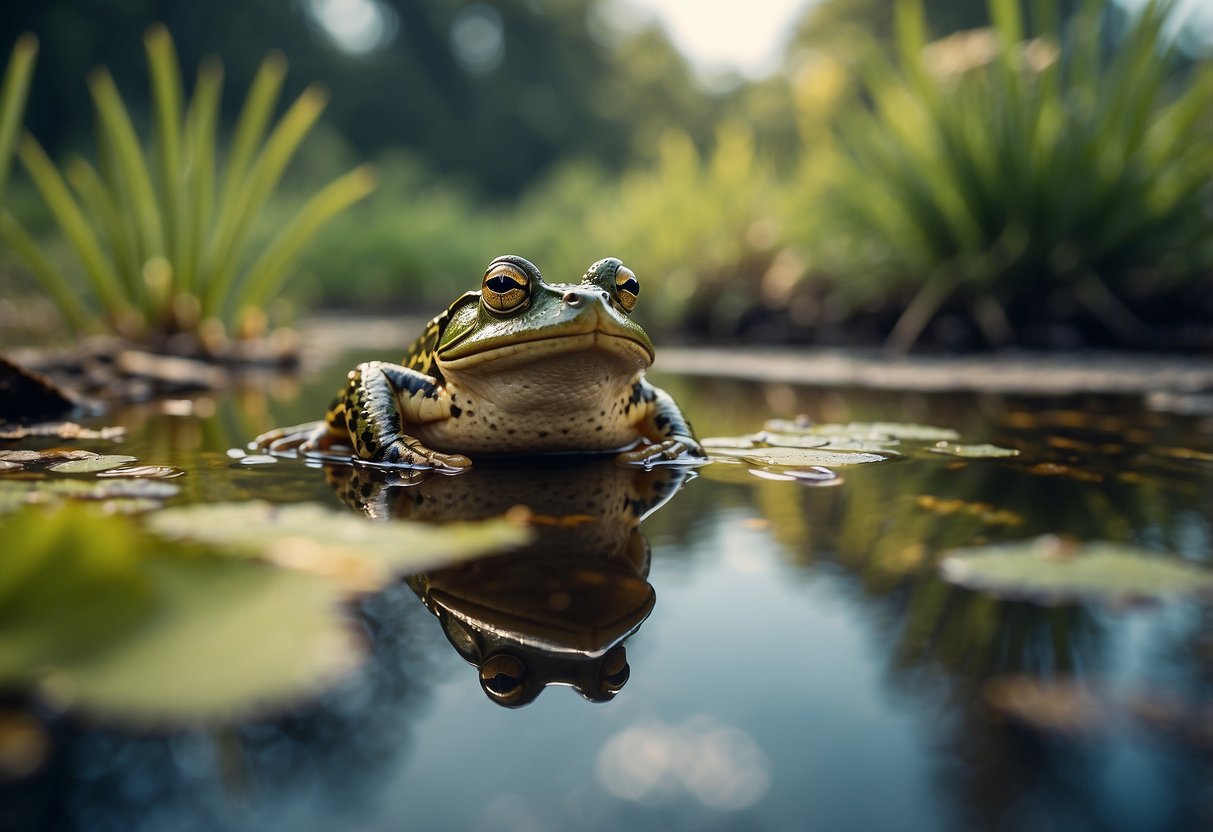
Effective frog and toad conservation is vital for protecting biodiversity and maintaining ecological balance.
This involves addressing habitat loss, climate change, and disease threats.
The Importance of Amphibian Conservation
Frogs and toads play a crucial role in our ecosystems. They help control insect populations and serve as indicators of environmental health.
These amphibians are often the first to show signs of ecosystem distress, signaling larger environmental issues.
Amphibians contribute to nutrient cycles. Their presence promotes healthy soil and water by breaking down organic material.
Additionally, their unique skin secretions have potential medical uses, including antibiotics and painkillers.
Protecting frog and toad populations is essential for preserving these ecological and potential medical benefits.
Threats to Frogs and Toads Worldwide
Frogs and toads face numerous threats globally.
Habitat destruction, due to urbanization and deforestation, is a major issue.
Wetlands and forests are often drained or cleared, removing crucial breeding and feeding grounds for amphibians.
Pollution from pesticides and industrial runoff contaminates habitats, posing further risks.
Climate change also impacts these species by altering their breeding seasons and habitat conditions.
Another significant threat is the spread of diseases like chytridiomycosis, caused by a fungal pathogen.
This disease has decimated amphibian populations worldwide.
Addressing these threats requires coordinated conservation efforts and increased awareness to protect these vital species.
Conservation Status and Species at Risk
Frogs and toads face significant threats worldwide. Many species’ populations are declining due to environmental changes, disease, and human activities.
Let’s explore their conservation status and highlight some of the most endangered amphibians.
IUCN Red List and Amphibians
The IUCN Red List is crucial for tracking the conservation status of amphibians.
It provides data on species’ risk levels ranging from “Least Concern” to “Critically Endangered.”
For amphibians, the list reveals alarming trends; many species are experiencing rapid declines.
Habitat loss, climate change, pollution, and disease are primary threats.
The fungus Batrachochytrium dendrobatidis, for example, has devastated amphibian populations globally.
Conservation efforts include habitat restoration, captive breeding, and disease management.
These initiatives aim to stabilize and increase populations of at-risk species.
Notable Endangered Species
Several frog and toad species are severely threatened.
The yellow-legged frog in Yosemite has seen success through relocation to healthier habitats.
Northern leopard frogs are also in peril, impacted by habitat destruction and pollutants.
The axolotl, native to Mexico’s lakes, is critically endangered due to pollution and water extraction.
The Panamanian golden frog, symbolic in Panama, faces extinction from the deadly chytrid fungus.
Conservation programs are vital to protect these and other species, involving captive breeding and field research.
International Conservation Efforts
Various international programs work to protect frogs and toads from threats like habitat loss, climate change, and disease.
Below, I’ve detailed efforts by key organizations involved in these initiatives.
CITES and Frog Protection
The Convention on International Trade in Endangered Species of Wild Fauna and Flora (CITES) plays a crucial role in protecting frog species.
CITES regulates international trade to make sure it doesn’t threaten wildlife.
Species like the axolotl and various poison dart frogs are listed under CITES, which means their trade is closely monitored.
Enforcement is key.
CITES collaborates with customs officials worldwide to prevent illegal trade and ensure compliance.
This international agreement helps conserve frog populations by making sure that any commercial activities are sustainable.
Another important aspect of CITES is its awareness campaigns.
These efforts help educate the public about the need for conservation and the rules regarding the trade of endangered species.
This public awareness is essential in reducing demand for illegal wildlife products.
The Amphibian Survival Alliance
The Amphibian Survival Alliance (ASA) is another vital player in the global conservation effort.
ASA partners with more than 40 organizations from various countries to protect amphibian species, including frogs and toads.
The alliance focuses on preserving habitats and combating diseases like Batrachochytrium dendrobatidis (Bd).
One of ASA’s projects is the Atelopus Survival Initiative (ASI), which is dedicated to saving harlequin frogs in South and Central America.
These frogs are severely affected by Bd, and ASI uses research and local community involvement to address this issue.
The ASA also promotes the creation of protected areas.
By safeguarding critical habitats, ASA helps ensure the long-term survival of many frog and toad species.
Additionally, ASA prioritizes scientific research to inform its conservation strategies, allowing for evidence-based actions.
Key Conservation Programs by Region

Frog and toad conservation is essential due to their declining populations worldwide.
Many regions have implemented various conservation projects to protect these amphibians.
North America
In North America, several programs aim to conserve frog and toad species.
In California, the decline of amphibians like the Yosemite toads and Sierra Nevada yellow-legged frogs is tackled by projects that include habitat restoration and research on population dynamics.
For instance, the Yosemite Conservancy funds research to protect these species.
The U.S. Fish and Wildlife Service supports initiatives with grants aimed at land acquisition and conservation planning.
Efforts focus on mitigating human impact, controlling invasive species, and creating safe environments for at-risk amphibians.
Central and South America
Central and South America are rich with biodiversity, including numerous frog and toad species.
Conservation efforts often involve creating protected areas and conducting scientific research to address threats like habitat loss and pollution.
In the Amazon, projects focus on preventing deforestation and preserving wetlands essential for amphibians.
Community-based initiatives are also crucial, involving local populations in conservation efforts.
Educating communities about the importance of amphibians in ecosystems helps garner support for protection measures.
Collaboration with international organizations brings resources and expertise to these vital programs.
Europe
European conservation programs often target specific endangered species.
Many countries have established protected areas and nature reserves to protect amphibian habitats from urbanization and agricultural expansion.
For example, the European tree frog is a focus of several conservation projects across the continent.
Organizations often engage in habitat restoration, such as creating or maintaining ponds and wetlands.
These efforts benefit not only frogs and toads but also other wildlife. Monitoring programs track population trends and health, guiding further conservation actions.
Asia
In Asia, conservation programs address the rapid decline of amphibian populations due to habitat destruction and pollution.
Efforts include establishing nature reserves and protected areas.
Some regions have specific projects focusing on critically endangered species like the Chinese giant salamander.
Captive breeding programs are also prevalent to boost populations and potentially reintroduce individuals into the wild.
Moreover, education campaigns raise awareness about the importance of amphibians and the threats they face.
Partnerships with universities and NGOs enhance the impact of these initiatives.
Africa
Africa’s rich frog and toad diversity faces threats from habitat loss, climate change, and disease.
Conservation programs often involve habitat protection, research, and community involvement.
For instance, projects in Madagascar, known for its unique amphibian species, focus on preserving rainforests and educating local communities.
Collaborations with global organizations help fund and implement these conservation efforts.
Ecotourism is sometimes promoted to create economic incentives for preserving amphibian habitats.
Field research provides valuable data on population health and environmental challenges.
Oceania
In Oceania, conservation efforts are crucial to protect unique amphibian species like the corroboree frog and the Maud Island frog.
In Australia, programs include habitat restoration, monitoring, and biosecurity measures to prevent the introduction of invasive species.
New Zealand’s conservation projects focus on protecting native species from habitat destruction and predation by invasive mammals.
Captive breeding and reintroduction programs aim to establish stable populations in the wild.
Partnerships with local communities and conservation groups are key to these efforts.
Conservation Techniques and Methodologies
To conserve frog and toad populations, various strategies are employed globally.
These methods include protecting and restoring their habitats, breeding them in captivity, conducting extensive research, and educating the public about their significance and conservation needs.
Habitat Restoration and Protection
One critical approach to conserving frogs and toads is habitat restoration and protection.
Wetlands and forests are essential for their survival, providing breeding grounds and homes.
In places where habitats are degraded, efforts are made to restore these environments.
This can involve planting native vegetation, removing invasive species, and improving water quality.
Special attention is given to regions where rare species like the natterjack toad reside, ensuring they have the specific conditions they require.
Captive Breeding and Reintroduction
Captive breeding programs play a crucial role in saving endangered amphibians.
These programs involve breeding frogs and toads in controlled environments and then reintroducing them to their natural habitats.
Zoos and conservation organizations around the world are actively involved in these efforts. The Association of Zoos and Aquariums is one such organization that supports these initiatives.
These programs increase population numbers and help maintain genetic diversity, which is critical for the species’ long-term survival.
Research and Monitoring
Research is vital for understanding frog and toad populations and their threats.
Scientists study factors like habitat loss, climate change, and diseases affecting amphibians.
In areas like Southern California, scientists monitor populations to track declines and recoveries.
Monitoring programs often involve volunteers who help record frog calls and sightings, making data collection more efficient.
This information is used to make informed conservation decisions and adapt strategies as needed.
Public Education and Awareness Campaigns
Educating the public is essential for successful conservation.
Awareness campaigns highlight the importance of frogs and toads to ecosystems and the dangers they face.
Programs emphasize simple actions people can take to help, such as creating backyard habitats or avoiding pesticides.
Organizations worldwide run these campaigns to foster a sense of stewardship in communities. For instance, the Wisconsin Frog and Toad Survey involves volunteers in monitoring efforts, promoting community engagement and awareness.
Participation and Collaboration
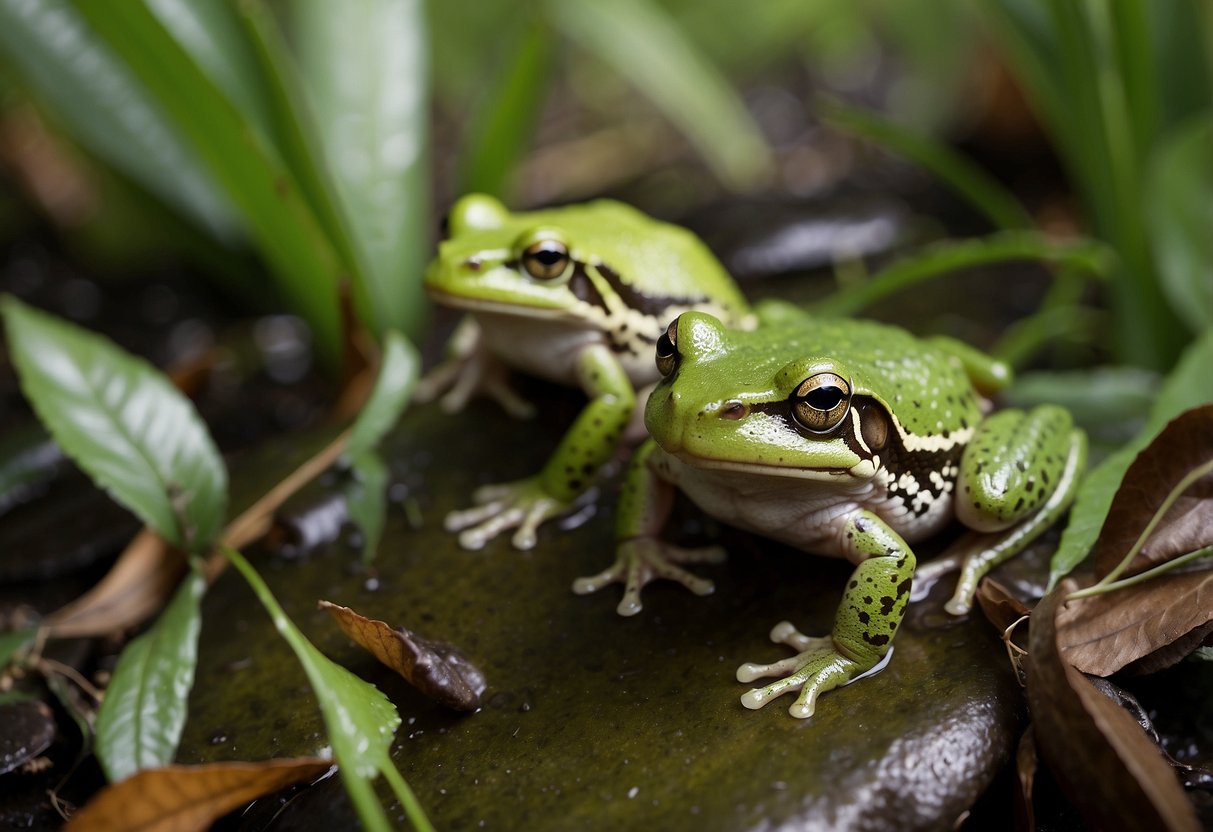
Frog and toad conservation requires robust participation and strategic collaboration. This section explores how communities and organizations work together to support amphibians.
Community Involvement in Conservation
Community engagement plays a crucial role in frog and toad conservation.
I’ve seen local residents, students, and volunteers participating in habitat restoration projects, such as planting native vegetation and cleaning up wetlands. These hands-on activities foster a sense of stewardship and awareness.
Education programs also help. Schools and local groups often host talks and workshops that teach about the importance of amphibians.
On events like Save The Frogs Day, thousands of volunteers raise awareness.
By engaging the community, these programs ensure that conservation efforts are sustainable and effective.
Partnerships Between Organizations
Collaborative efforts between organizations are essential for successful conservation programs.
The Atelopus Survival Initiative is a prime example. This alliance unites over 40 organizations from 13 countries to protect harlequin toads.
Financial support and expertise are shared among these groups.
For instance, initiatives within the Conservation Action Plan secure long-term funding and resources for on-the-ground and captive programs.
Such partnerships ensure a well-coordinated response to threats like habitat loss and disease.
By leveraging each group’s strengths, these partnerships can tackle more complex conservation challenges.
Conservation Funding and Economic Factors
Funding and the economy play crucial roles in the success of frog and toad conservation programs. Both factors determine the effectiveness of efforts such as habitat preservation and breeding initiatives.
Funding for Conservation Efforts
Funding is essential for conservation activities.
Governments and organizations allocate grants and resources to protect endangered species.
For example, the U.S. Fish and Wildlife Service recently announced over $20 million for projects in California. This money supports land acquisition and conservation planning.
Non-profits and environmental groups also contribute significantly.
They raise money through fundraising events and donations. These funds are used for research, habitat restoration, and public awareness campaigns.
Government and private sector partnerships can further boost funding. Businesses often sponsor conservation projects as part of their corporate social responsibility initiatives.
Economic Impact of Conservation
Investment in conservation has tangible economic benefits.
Successful programs can lead to increased eco-tourism, bringing revenue to local communities. For example, protected areas often attract tourists interested in wildlife and nature.
Employment opportunities also arise from conservation initiatives.
Staff is needed for roles ranging from scientific research to park management. Local businesses like hotels, restaurants, and tour services also profit from increased visitor numbers.
Though conservation requires substantial upfront costs, the long-term economic gains are significant.
Healthy ecosystems provide services such as clean water and air, which are essential for human well-being.
Moreover, preserving biodiversity can prevent costly issues like soil erosion and water contamination.
Legislation and Policy
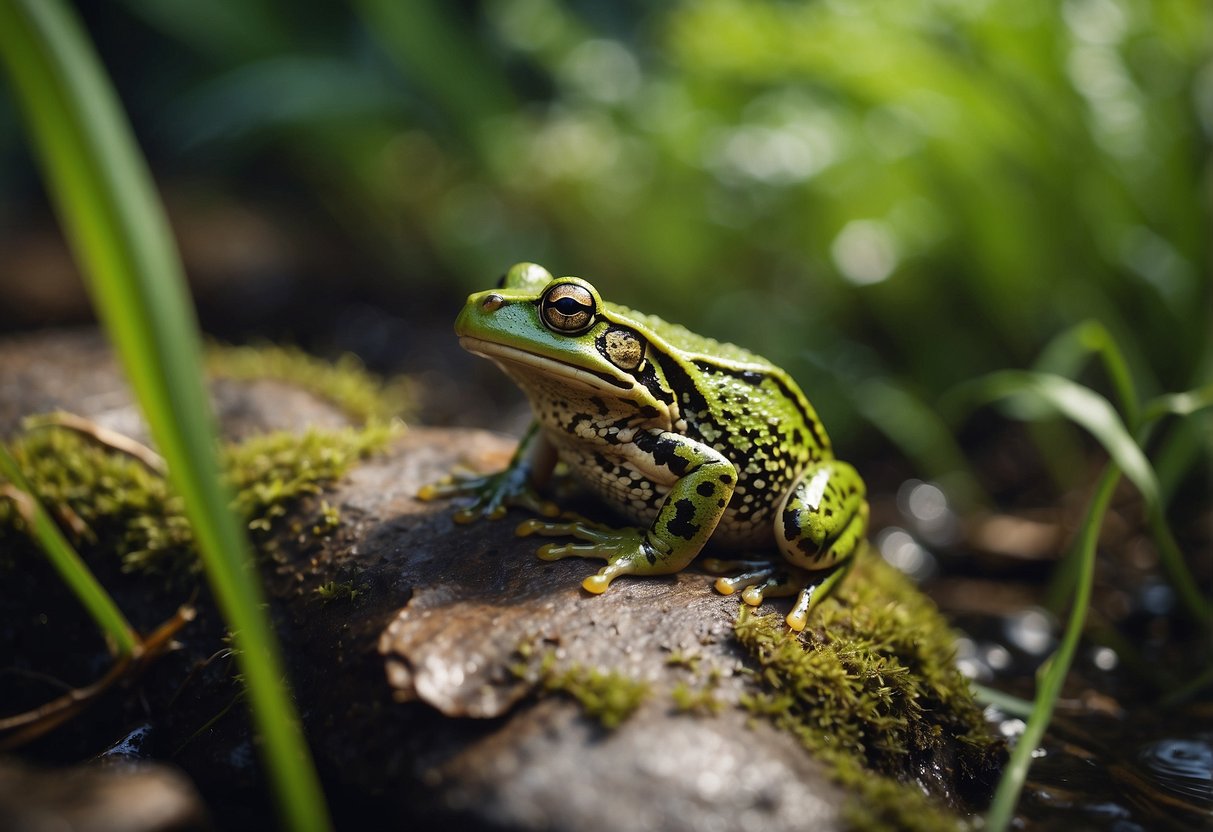
Many countries and international bodies have implemented laws and agreements to protect frogs and toads. These efforts focus on habitat protection and regulating trade to prevent extinction.
National Laws and Protections
Different countries have varying levels of protection for amphibians.
In the United States, the Endangered Species Act protects many threatened frog and toad species. This law helps by designating critical habitats and providing funding for conservation.
In Brazil, the National Environmental Policy Act supports programs to protect amphibians like the harlequin frog.
Brazil’s strong environmental policies have been crucial for safeguarding the diverse rainforest species.
Australia has several laws aimed at amphibian conservation, including the Environment Protection and Biodiversity Conservation Act.
This act provides specific measures to protect habitats and prevent the introduction of diseases that harm these species.
International Treaties and Agreements
Global agreements also play a vital role.
The Convention on International Trade in Endangered Species (CITES) regulates the trade of endangered frogs and toads to prevent exploitation.
This treaty is key in controlling illegal trade and ensuring species are not overharvested.
The Ramsar Convention focuses on wetlands, which are crucial habitats for many amphibians.
By protecting these habitats, the convention aids in preserving the environments that frogs and toads rely on.
Another important agreement is the Convention on Biological Diversity (CBD).
This treaty promotes sustainable practices and international cooperation. It encourages countries to develop national strategies for conserving amphibian species and their habitats.
Future Directions in Amphibian Conservation

I believe the future of amphibian conservation will involve new and creative strategies as well as addressing the impacts of a changing climate on these vital creatures. Here’s what I see as crucial steps forward.
Innovative Conservation Strategies
One major focus is the development of targeted initiatives like the Atelopus Initiative.
This program will undertake long-term research and conservation strategies to protect endangered species.
Creating protected areas where amphibians can thrive without human interference is essential. Collaborations between governments, NGOs, and local communities can lead to the establishment of more such sanctuaries.
Breeding programs like those mentioned in the El Valle Amphibian Conservation Center are critical. They ensure species survival and help reintroduce them into their natural habitats.
Advancements in biotechnology, such as genetic rescue and disease mitigation, will also play a key role.
Scientists can use these tools to protect amphibians from threats like the chytrid fungus.
Climate Change and Its Impact on Efforts
Climate change is altering habitats and posing new challenges for amphibian conservation.
Research predicts significant shifts in amphibian distributions due to rising temperatures and changing precipitation patterns.
Conservation efforts must adapt to these changes.
For instance, habitat restoration projects need to consider future climate conditions to ensure they remain suitable for amphibians.
According to a study on amphibian distributions, land-use changes combined with climate shifts can drastically affect where amphibians can live.
This means conservation plans must be dynamic and flexible.
Monitoring and reacting rapidly to changes in climate conditions will be key.
This will involve using advanced technologies like remote sensing and climate modeling to anticipate and manage threats effectively.
Frequently Asked Questions
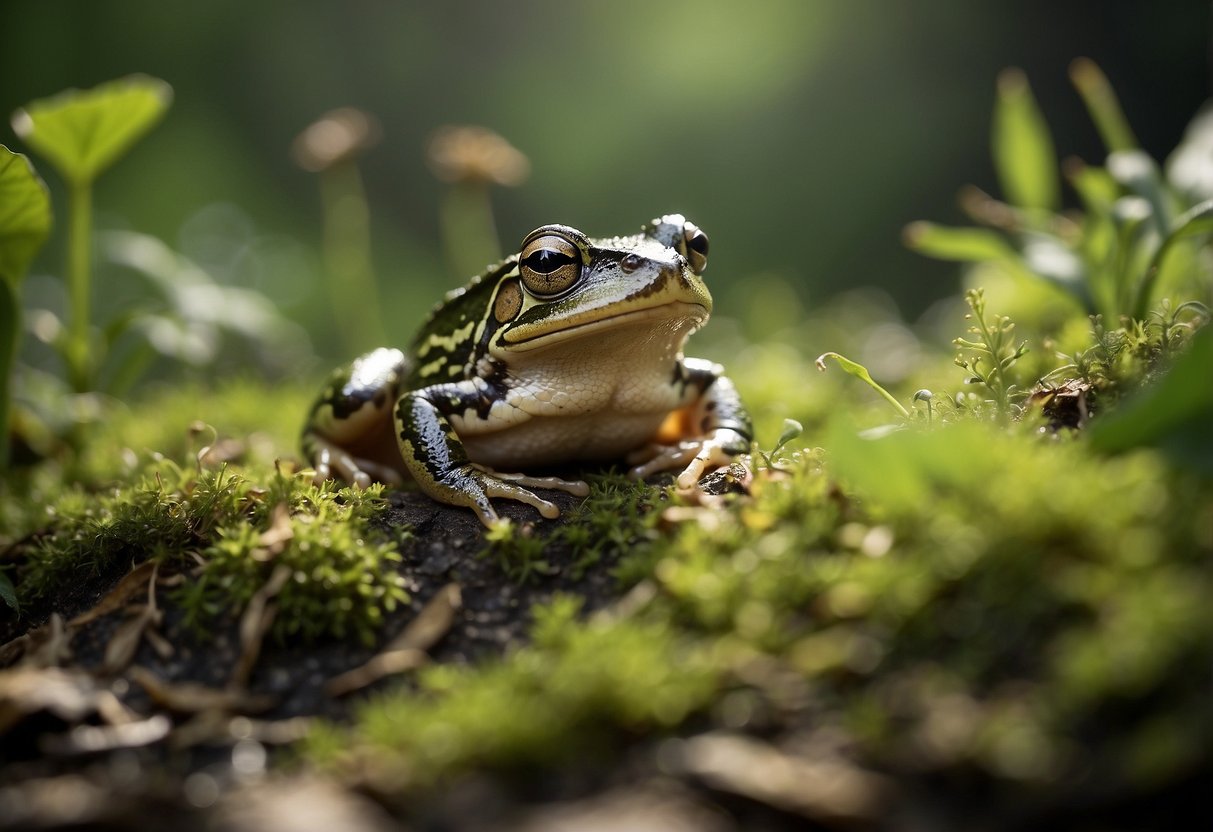
In this section, I answer common questions about frog and toad conservation programs around the world. From effective strategies to key organizations, these points offer insight into the ongoing efforts to protect these amphibians.
What are effective conservation strategies for protecting frog and toad populations globally?
Effective strategies include habitat preservation, captive breeding programs, and disease management.
Habitat restoration is crucial, as many amphibians rely on specific wetland areas. Captive breeding helps boost populations, while disease management focuses on combating threats like chytrid fungus.
How can individuals participate in amphibian conservation projects in their local areas?
Individuals can participate by joining local wildlife groups, volunteering for habitat restoration projects, and supporting conservation organizations.
Simple actions like building backyard ponds or reducing pesticide use can also make a big difference.
Which organizations are considered reputable for contributing to frog and toad conservation efforts?
The Association of Zoos and Aquariums and Froglife are two reputable organizations. They focus on habitat conservation, research, and public education to protect amphibian species.
What are the critical threats to frog and toad species that conservation programs aim to address?
Key threats include habitat loss, climate change, pollution, invasive species, and disease.
Conservation programs work to reduce these threats through habitat restoration, research on climate impacts, and disease monitoring.
How does FrogWatch USA contribute to amphibian conservation?
FrogWatch USA involves citizen scientists in monitoring local frog and toad populations.
By collecting data on calling frogs during breeding season, they help track population trends and inform conservation efforts.
What are some significant achievements of amphibian conservation programs in recent years?
Recent achievements include the successful recovery of the Chiricahua leopard frog population in the Southwest, largely attributed to hands-on conservation efforts.
Programs have also seen success in captive breeding and reintroducing species to their natural habitats.
